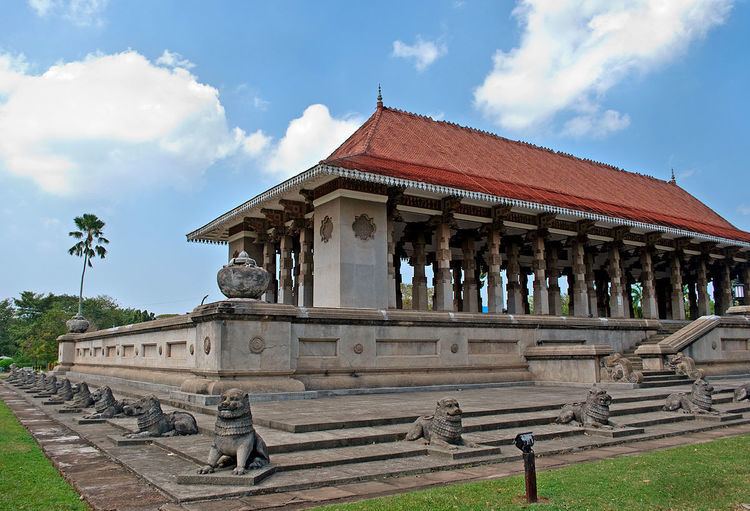Completed 1953 Construction started 4 February 1949 | Floor area 10,000 sq. ft Opened 1953 | |
 | ||
Alternative names Independence Commemoration Hall Location Cinnamon Gardens, Colombo Owner Ministry of Cultural Affairs Architect Tom Neville Wynne-Jones Hours Open today · Open 24 hoursSundayOpen 24 hoursMondayOpen 24 hoursTuesdayOpen 24 hoursWednesdayOpen 24 hoursThursdayOpen 24 hoursFridayOpen 24 hoursSaturdayOpen 24 hours Similar Seema Malaka, National Zoological Gardens, National Museum of Colombo, Viharamahadevi Park, Gangaramaya Buddhist Temple | ||
Independence memorial hall in sri lanka
Independence Memorial Hall (also Independence Commemoration Hall) is a national monument in Sri Lanka built for commemoration of the independence of Sri Lanka from the British rule with the restoration of full governing responsibility to a Ceylonese-elected legislature on February 4, 1948. It is located at the Independence Square (formerly Torrington Square) in the Cinnamon Gardens, Colombo. It also houses the Independence Memorial Museum.
Contents
- Independence memorial hall in sri lanka
- Srilanka colombo independence memorial hall
- Design
- In popular culture
- Events Held
- References
The monument was built at the location where the formal ceremony marking the start of self-rule, with the opening of the first parliament by the HRH Prince Henry, Duke of Gloucester occurred at a special podium February 4, 1948.
Located at the head of the monument is the statue of the first prime minister of the country Rt. Hon. Don Stephen Senanayake "The Father of the Nation". Most of the annual National Independence Day celebrations have been held here. Apart from a monument it served as the ceremonial assembly hall for the Senate of Ceylon and the House of Representatives of Ceylon until the parliament was moved to the new parliament complex. Currently it is the venue for religious events and annual national day celebrations.
Srilanka colombo independence memorial hall
Design
The building was designed by a group of eight notable architects led by Tom Neville Wynne-Jones CBE, and included F.H. Billimoria, Shirley de Alwis, Oliver Weerasinghe, Homi Billimoria, Justin Samarasekera and M. B. Morina. The design of the building is based on the Magul Maduwa (Celebration Hall), the Royal audience hall of the Kingdom of Kandy the last native kingdom of the island, where on 5 March 1815 the Kandyan Convention was signed between the British and the Kandyian Chieftains (Radalas) ending the Kingdom of Kandy.
In popular culture
The Memorial Hall was featured as a pitstop on both 4th season of The Amazing Race Asia, and 1st season of The Amazing Race Australia.
